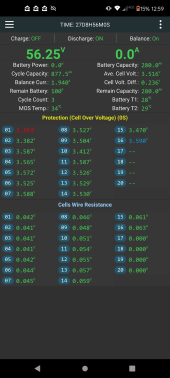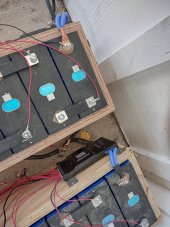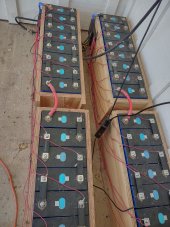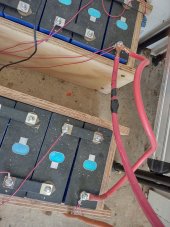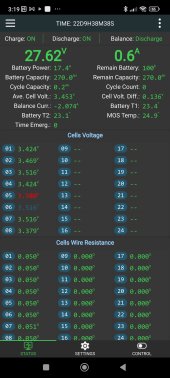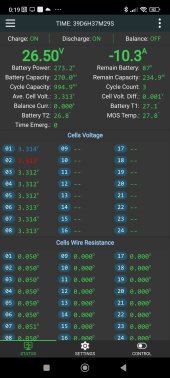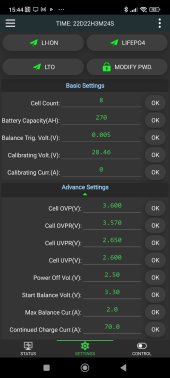jibberishballr
New Member
- Joined
- Aug 4, 2022
- Messages
- 35
If I'm in the wrong subforum, please redirect me...
I have two 16cell LifePO4 280ah battery packs connected with 2 200a JK BMS' (b2a20s20p). I've noticed that the voltage between the two is not that close. I have identical settings (at least the ones I could set) in the JK app. There's also some difference between each cell (more than I think there should be). I noticed that battery pack #2 is also showing more cycles than battery pack #1 (but I believe I had battery pack #1 added first).
Trying to understand how to get these more aligned on voltage and how to lower the cell difference in voltage per pack. Let me know if I can provide any more details around the setup.
Any suggestions?
Thanks in advance!
Battery Pack 1 Status and Settings:

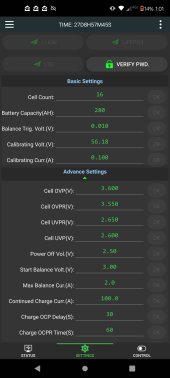
Battery Pack 2 Status and Settings:
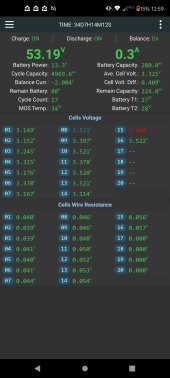
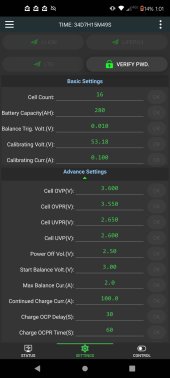
I have two 16cell LifePO4 280ah battery packs connected with 2 200a JK BMS' (b2a20s20p). I've noticed that the voltage between the two is not that close. I have identical settings (at least the ones I could set) in the JK app. There's also some difference between each cell (more than I think there should be). I noticed that battery pack #2 is also showing more cycles than battery pack #1 (but I believe I had battery pack #1 added first).
Trying to understand how to get these more aligned on voltage and how to lower the cell difference in voltage per pack. Let me know if I can provide any more details around the setup.
Any suggestions?
Thanks in advance!
Battery Pack 1 Status and Settings:


Battery Pack 2 Status and Settings:






